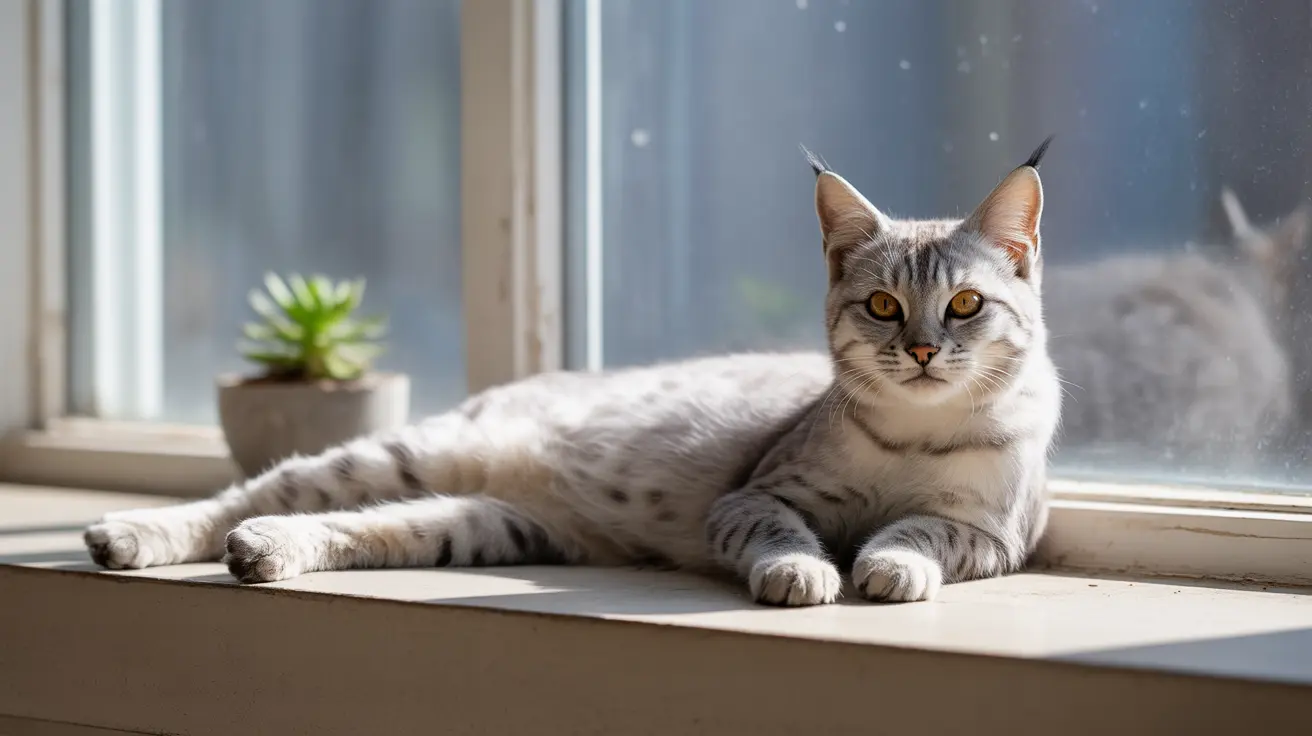The Scientific Reality of Bobcat-Domestic Cat Hybridization
Despite persistent rumors and claims, there is no scientific evidence supporting the existence of hybrid offspring between domestic cats (Felis catus) and bobcats (Lynx rufus). These two species are too genetically distant to produce viable offspring, belonging to different genera entirely - Felis for domestic cats and Lynx for bobcats.
Multiple genetic studies have consistently shown that supposed hybrid cats lack any bobcat DNA markers. This scientific evidence definitively proves that natural or intentional breeding between these species does not result in hybrid offspring.
Why People Think Their Cat Might Be Part Bobcat
Physical Similarities That Create Confusion
Several physical characteristics often lead people to believe their cat might have bobcat ancestry:
- Large size (12-15 pounds or more)
- Spotted or striped coat patterns
- Tufted ears
- Short "bobbed" tail
- Muscular build
- Large paws
However, these features can all occur naturally in domestic cats through selective breeding and natural genetic variation, without any wild ancestry required.
Breeds That Resemble Bobcats
Two domestic cat breeds in particular contribute to hybrid confusion:
- Pixie-bobs: Despite their name and appearance, DNA testing confirms they are purely domestic
- American Bobtails: Also fully domestic, bred specifically to resemble wild bobcats
The Truth About Wild-Domestic Cat Hybrids
While bobcat-domestic cat hybrids don't exist, other wild-domestic cat hybrids do occur under controlled breeding conditions:
- Bengal cats (domestic cat × Asian leopard cat)
- Savannah cats (domestic cat × African serval)
- Safari cats (domestic cat × Geoffroy's cat)
These successful hybrids involve species more closely related to domestic cats than bobcats are, making hybridization genetically possible.
Frequently Asked Questions
Can domestic cats and bobcats breed to create hybrid kittens?
No, domestic cats and bobcats cannot produce hybrid offspring. They are too genetically distant, belonging to different genera (Felis and Lynx), which makes successful reproduction impossible.
What physical traits distinguish a true bobcat from a domestic cat or bobcat-lookalike breed?
True bobcats are significantly larger (15-40 pounds), have distinctive black-tipped ears with prominent tufts, facial ruff, and bobbed tails. They also have more muscular builds and larger paws than any domestic cat breed.
Are Pixie-bobs or American Bobtails actual hybrids between domestic cats and bobcats?
No, despite their appearance and common misconceptions, both Pixie-bobs and American Bobtails are completely domestic cat breeds. DNA testing has confirmed they have no bobcat ancestry.
How can I tell if my cat has any bobcat ancestry through DNA testing?
While you can DNA test your cat, no commercial test will show bobcat ancestry because such hybrids don't exist. DNA tests can, however, identify other verified wild cat ancestry, such as Asian leopard cat genes in Bengal cats.
What legal and ethical issues exist around keeping bobcats or supposed bobcat hybrids as pets?
Keeping actual bobcats as pets is typically illegal without proper permits, as they are wild animals. There are no legal issues with keeping domestic cats that look like bobcats, as they are fully domestic animals.
Conclusion
While the idea of owning a half-bobcat hybrid cat might seem exciting, the scientific evidence is clear: such hybrids simply don't exist. The wild-looking features that make some cats appear similar to bobcats are the result of selective breeding within domestic cat populations, not wild ancestry.
If you're attracted to the bobcat's appearance, consider adopting a Pixie-bob or American Bobtail instead. These domestic breeds offer the wild look you desire while being properly adapted to life as household pets.






